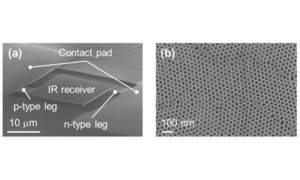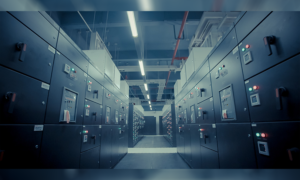The method of leak quantification can help in formulating a strategy to take a sustainable action on the compressed air leaks.
The leaks in the air compressors often tend to get ignored, but they can be a considerable source of energy wastage in an industrial compressed air system. A typical manufacturing facility or a plant (not properly serviced on time) will likely have a leak rate close to 20 percent of total compressed air production capacity. As per our energy managers, a 1 mm hole can lead to leakage of 3 cfm which may cost you approximately ₹ 22000 in a year.
Leaks can also lead to various other operating losses as they cause a drop in the overall system pressure, which can make air tools function less efficiently, adversely affecting production. It will also help in prioritising the actions on the leaks based on the locations and repair them effectively in the compressor room. This way additionally, a reasonable amount of energy can be saved with lower energy consumption and by optimising the air compressor.
How to Find a Leak in Your Air Compressor?
Air compressor leaks are common in all applications, but it can be very costly to repair and difficult to detect. It is said that 20-30 percent of the compressed air is wasted as leaked air in a manufacturing plant. Therefore, it is very important to detect these leaks, as it could save thousands of wasted Rupees a year.
How do find and fix air compressor leaks?
Some leaks are easy to detect just by listening when walking by the air compressor system. Walk by the compressor and any lines attached to the compressor and listen for a hissing noise. However, if it is a loud factory like plant or body shop then it might be difficult to find leaks this way. Ultrasonic Acoustic Detector is the most reliable tool in detecting any air compressor or airline leaks. These detectors can easily recognise the high frequency hissing sounds that are associated with air leaks.
It is usually consists of audio filters, microphones, amplifiers and visual indicators or headphones that help in the air leak detection. These devices detect turbulent air flow, which is air that is flowing in different directions. Turbulent air flow is caused by a leak somewhere in the line. This air creates a noise that is detected by the ultrasonic acoustic detector either by visual representation on a screen or by the earphones that are included with the device. These devices are ideal for noisy facilities because they can filter out any background noise to accurately detect a leak.
What is the acceptable leak percentage in my compressed air system?
Theoretically, there should be 0 percent compressed air leakages in a manufacturing plant. However, as there are considerable constraints, it is not possible to eliminate 100 percent leakages from the compressed air site. Hence, efforts are made to have the lowest percentage of leaks in the plant. As a thumb rule, the energy experts always recommend having compressed air leakages less than 5 percent in a manufacturing plant.
What is to be done if leaks are more than 5 percent?
If the quantified air leaks are between 5 percent and 10 percent then it is advisable to perform a leak detection test with an air audit expert. If the quantified leaks are more than 10 percent then it should be fixed on high priority as they are draining the resources. Here, the recommendation is to take the help of Air Audit Experts who will audit your compressed air system and provide you the right solution to the issues.
However, if there are budget and time constraints, you may try the following ways to address the compressor air leaks in-house for sustainable energy savings:
- Create and observe leak repair programs like “Leak detection week” once in six months with the plant employees, wherein one hour each day for 7 days could be dedicated collectively to identify and repair the leaks
- Make people aware of the cost of leaks so that that could be a collective consciousness towards the problem Such engagements will not only help to repair and reduce leaks, but this will convert into a commitment to energy savings within the plant community. But as you know home remedies can help to cure mild diseases. For severe syndrome, it is always recommended to consult with your family doctor. Likewise, in-house solutions are doable in small and easy to fix leakages with short term results. The kind of expertise you will get with experts will give you long term energy savings.
But what is the need of an Air Audit Expert to repair simple air leaks?
Leaks are simple to attend till the time they are visible and can be fixed internally. However, in a running factory environment, where there is a lot of movement and often commotion, it often becomes a challenge in detecting the leak of gases and fixes them. Further, it is not possible to shut down the plant every time for the leak detection test.
Therefore, it is advised to call an Air Audit Experts, who will have the precise advanced tools for leak detection – like acoustic sound image, which helps to detect the air leak with leak value and the location of it, very accurately. The root cause analysis of the leaks will help in repairing them permanently without shutting down the network that has technological demands.
The other benefits of conducting compressed air audit under expert guidance are:
- Clear report – which can be also be used as a guide to compressed air audits
- Energy consultants provide independent advice tailored to your need based on the insights and innovations in air compression technology
- Sophisticated requirements like an ultrasonic lead detector, photo chromatic leak detector allows interrupted work at your plant
- You can rely on compressed air audit experts for effective and sustainable energy-efficient solutions
Cookie Consent
We use cookies to personalize your experience. By continuing to visit this website you agree to our Terms & Conditions, Privacy Policy and Cookie Policy.














